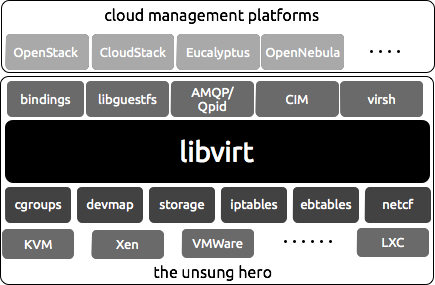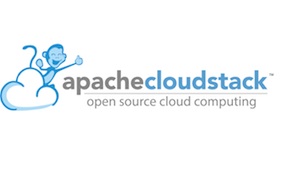Docker and Linux Containers (LXC) 1.0 Release

After a long gap of over 8 weeks I am writing this article. During this break got time to travel in India, which by the way was wonderful, and after returning started working on dockers and linux containers. During past weeks I spend some time experimenting with dockers and LXC and my first impressions were, why we need to re-invent the wheels when bare-metal computing can be scaled based on application demands, using modern fabric based computing advances like AMD seamicro and HP moonshot combined with tools like Cobbler, Ansible, Puppet, Chef, CFEngine etc. But after experimenting bit longer understood the real value of docker and LXC in making it easier to build self sufficient portable application enviroments which fits very well for certain use cases.
In this article I will be talking more about LXC 1.0 Release and its impact on docker. For the readers unfamiliar with Dockers and LXC I have included a short summary in the article, for details please check the links below:
Libvirt - The Unsung Hero of Cloud Computing

Initially my intention was to write an article on Round up of open source Cloud Management Platforms (CMP), but while doing research found one piece of software library so fundamental, that it holds the key to very existence of Cloud Computing services and platforms as we know it today (that includes Amazon AWS, OpenStack and CloudStack). So I decided to postpone my idea and started to write an article on this Unsung hero of Cloud Computing called libvirt [1], which I believe many people won’t have heard of. Obviously talking about software library tend to be technical, so this article will have a technical tone, but I will attempt to make it readable for everyone interested in Cloud Computing.
Libvirt is an open source API, daemon and management tool for managing platform virtualzation and these APIs are widely used in the orchestration layer of Cloud Management Platform. Libvirt makes it possible to control and manage millions of compute nodes, storage and network devices via common programmable interface. Its like being able to control and orchestrate fleet of millions of car irrespective of different manufacturer, model, or engine through a common interface from a single car (it can be more then one car for redundancy and high availability). What started as a management API for Xen, today has been extended to support major components of Cloud Computing platforms.
Shanghai Free Trade Zone Latest Updates

Its been two months since the establishment of Shanghai Free Trade Zone (FTZ) and over a month since I wrote my last article Shanghai FTZ Updates - Summary of Administrative Measures. In Shanghai FTZ so far there are total 1400 Chinese Domestic companies and 38 Foreign companies according to ChinaDaily [1]. Foreign investors are cautiously optimistic about Shanghai FTZ and waiting for policy clarification and advatanges compared to existing special economic zone (SEZ). In this article will summarize the updates known about Shanghai FTZ so far.
Cloud Computing in China
Cloud Computing Market 2012 - RMB 3.5 billion
- SaaS - RMB 2800 million
- IaaS - RMB 573 million
- PaaS - RMB 184 million
As part of series of article covering my talk in BarCamp and susequently in OpenStack Summit, I covered What is Cloud Computing in my earlier article, in this article I will cover up the remaining topics:
- What is cloud computing officially in China?
- Current state and market analysis of cloud computing in China
- Regulatory framework for cloud computing in China
- Factors affecting cloud computing in China
- Future of cloud computing in China
China home to over 500 million internet users with over 242 million eCommerce users (according to CNNIC [1]) and with online shopping transactions volume expected to reach 1.85 trillion yuan (US$ 302 billion) in 2013; it is natural to expect that Cloud Computing in China will follow similar growth given the economy of scale, flexibility and cost advantage it offers. But like anomalies in other industries, Cloud Computing is a nascent industry in China with a very limited market share and appeal to enterprises. Also due to current prevailing regulations in China, it becomes much harder to transform and bring innovation, as the new regulations inline with technological progress are still under discussion. In China Cloud Computing is adopted by few internet companies for internal use, as it is virtually impossible for foreign companies to offer Cloud Computing Services, unless new regulatory revisions are made. Even for local technology companies and startups it is virtually impossible to built innovative Cloud Computing services, given the necessity of approvals and licenses required. These regulatory and licensing challenges combined with business challenges makes it cost prohibitive and expensive to operate Cloud Computing Services; taking away the flexibility, economy of scale and cost advantages; the basic tenets of Cloud Computing.
Why Gartner Analyst is wrong about Cloud Computing and OpenStack
Its been over two weeks since my last article, I have been busy with work and family. Yesterday I read an article Why vendors can’t sell OpenStack to enterprises, while I agree with some of the observations, the overall article seems biased and do not reflect the real cloud computing and how OpenStack is trying to address those challenges for enterprises. Nowhere in the article they mentioned CloudStack, oVirt, Eucalyptus, OpenNebula or any other major cloud computing platform.

On the contrary article make a reference to VMware vCloud Suite, BMC Cloud Lifecycle Management, Cisco Automated Suite for Clouds, Microsoft System Center, IBM SmartCloud Orchestrator, HP Cloud Service Automation, CA Automated Suite for Cloud, most of which are not really true cloud management and orchestration platform in real sense, but are more a combination of Data Center Management and Server Virtualization Management (i.e. Virtual Machine Life Cycle Management). If any enterprise needs to built a private cloud computing platform using these tools, they will need to invest significant amount of technical resources (both devops and programming) compared to building it on OpenStack, CloudStack and its other open source siblings. Indeed what most enterprises call Private Cloud is in essense a Server Virtualization Platform either with or without Data Center Management Platform which helps them to manage virtual machine life cycle on a set of physical servers with some analytics.
What is Cloud Computing?
Recently (i.e. on Saturday 26th October) I talked about Current State and Future of Cloud Computing in China in barcamp SHANGHAI. In my talk I covered:

- What is cloud computing?
- What is cloud computing officially in China?
- Current state and market analysis of cloud computing in China
- Regulatory framework for cloud computing in China
- Factors affecting cloud computing in China
- Future of cloud computing in China
If you check companies in US Stock Exchange be it in Internet and Information Technology sector or not, you will notice many are adding Cloud Computing in their portfolio of products or services to drive higher valuation or sales. Its not far-fetched when you will be able to buy a Cloud Toilet, like UK local authorities operate cloud-connected toilets which is helping them driving down costs while increasing quality. So it becomes imperative to understand what is really Cloud Computing.
Shanghai FTZ Frequently Asked Questions

On October 15 th 2013 Shanghai Government released “Interpretation of the Administrative Measures for the Shanghai Free Trade Zone”, which clarified several issues regarding the Framework Plan for the China (Shanghai) Pilot Free Trade Zone. It tries to answer the frequently asked questions related to regulatory draft of the Shanghai FTZ. Indeed most of the content in the FAQ’s is already part of the Regulatory draft and I have already covered it in the previous article Shanghai FTZ Updates - Summary of Administrative Measures.
Shanghai FTZ Updates - Summary of Administrative Measures

In my previous article Best Location for Startups in China - Shanghai FTZ I covered the first regulatory draft of Shanghai FTZ with respect to Startups in China. Most of the details regarding the Framework were published subsequently on the Shanghai FTZ Site [1]. I have been regularly attending seminars and discussion regarding the Shanghai Pilot Free Trade Zone and found that many people have a lot of questions related to the purpose of setting up Shanghai Pilot Free Trade Zone. What is the advantage of new Shanghai Pilot Free Trade Zone over existing Special Economic Zone and Free Trade Zone.
Since many of the Financial innovations and trade related regulations are not yet released, so the picture is not clear. Still based on the information already available, this article try to summarize and elaborate on some of the administrative measures. Hopefully this will answer some of the questions.
Shanghai Free Trade Zone (FTZ) - What is known

In my previous two articles on Shanghai Free Trade Zone I talked about the initial draft regulation and negative list. In this article I will like to summarize what I know about Shanghai FTZ. Hopefully it will help people looking for information and update on Shanghai FTZ.
CloudStack - The Dark Horse of Cloud Platforms Releases 4.2.0

Recently I have been working extensively with various cloud platforms and with CloudStack in particular. Clouds pique my interest lately since there is so much potential for innovation in various areas. Also slowly it is becoming the basic foundation for modern scalable software and systems. You talk of Google, Facebook, Amazon, Apple; icons of modern systems and softwares; and find all are involved in improving various aspects of cloud platform. You can see the innovation happening via open datacenter platform like OpenCompute or in server platforms like SeaMicro, or in operating systems like CoreOS or cloud platforms like OpenStack, CloudStack, oVirt and many more. Still all of these just the beginning and there are many more innovations and breakthrough needs to happen.
I was personally evaluating some of this cloud platforms for one of my side projects, I have been working on in my spare time. During my evaluation, to my surprise I found, CloudStack as one of the dark horses of cloud platforms race. Although all the media attention and hype is around OpenStack and Amazon. Recently Apache CloudStack released version 4.2.0. In this article I will briefly discuss about CloudStack and in particular about new features in version 4.2.0, which is the second major release since CloudStack became top level project of Apache Foundation (ASF) -.